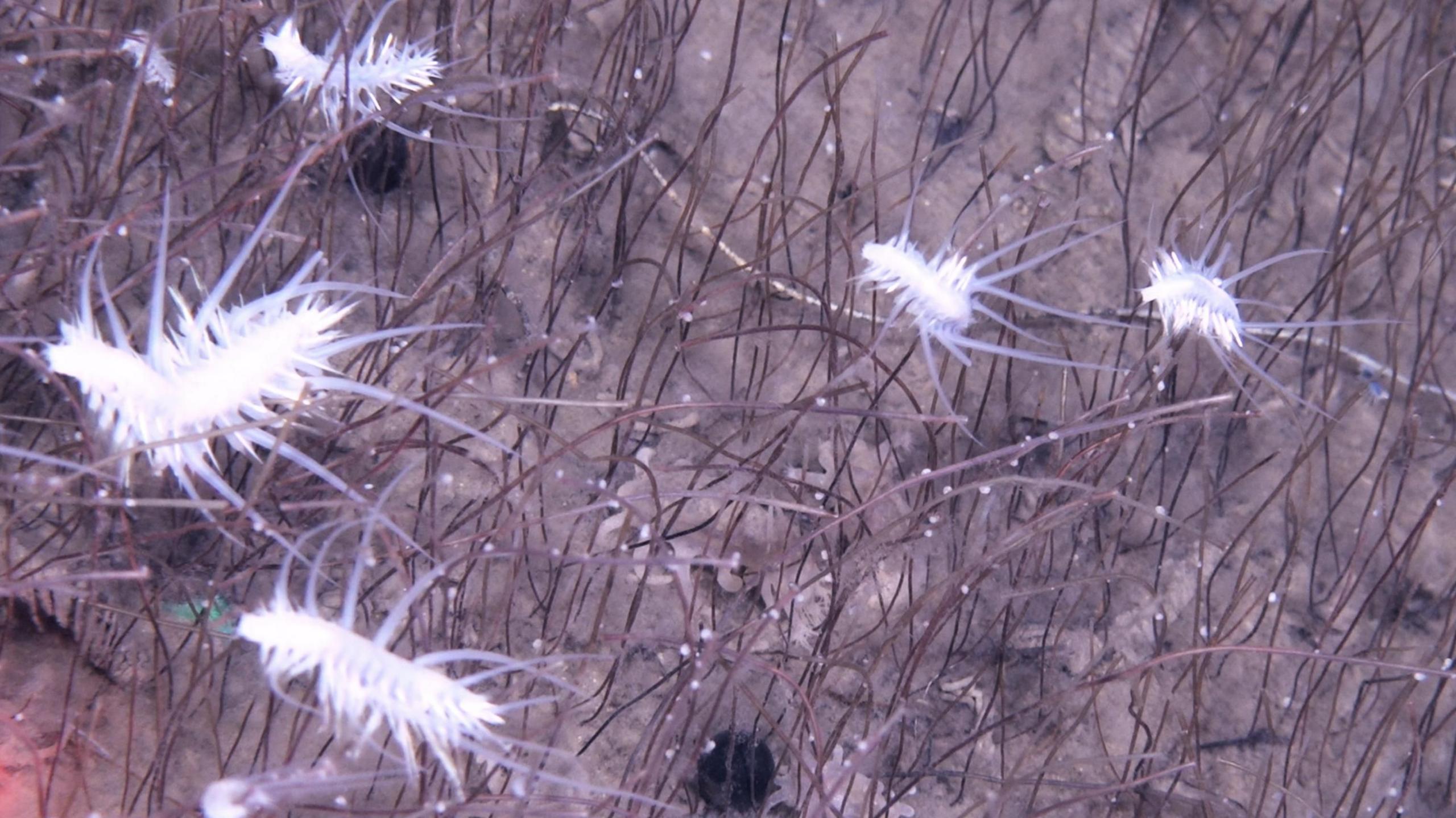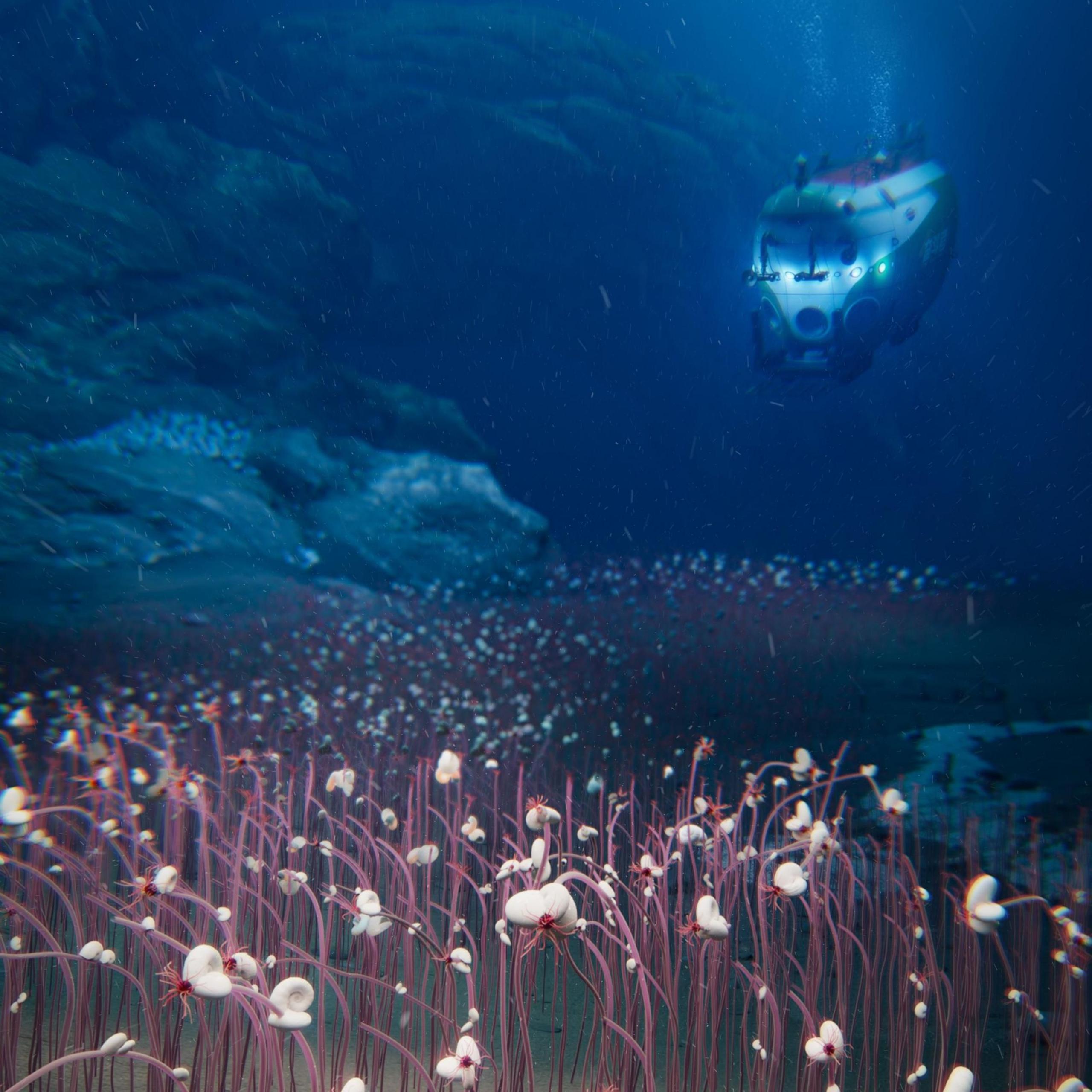Strange life seen for first time in extreme depths of the ocean
Watch: Some of the strange, extreme life filmed at the depths of the ocean
- Published
Imagine diving deep down to the bottom of the ocean, a place so dark that sunlight can't reach there.
Using a special underwater vehicle - called a submersible (a small submarine) -that's exactly what a team of scientists from China did, exploring deep ocean trenches - like giant underwater valleys - in the northwest Pacific Ocean, looking for life.
The scientists dove more than 9,500 metres down, that's over 5.9 miles and deeper than the world's tallest mountain, Mount Everest, is tall.
What they discovered in the dark depths surprised them.
Deepest fish ever caught on camera
- Published3 April 2023
Guitar sharks and squat lobsters: Meet the new sea discoveries
- Published13 March
Check out this amazing glowing sea slug
- Published13 November 2024
Down in the pitch-black darkness, they saw beds of clams, mats of bacteria that looked like ice, and fields of strange worms called tube worms.
These creatures live under very high pressure with no sunlight. They survive by using chemicals like methane and hydrogen sulfide that come from cracks in the ocean floor. This is called chemosynthesis, which means 'making energy from chemicals'.
Before this trip, the deepest sea animal ever filmed was at 8,336 metres. But the team went even deeper and found more life than anyone expected living in such a dark and high-pressure environment.
The scientists say they have recorded species never seen before.
Dr Xiaotong Peng, one of the lead researchers, told BBC News: "It's exciting – especially for a deep sea scientist – to go to a place that human beings have not explored.
"It's a great opportunity to discover new things. And what we saw was quite amazing."

The white, spiky creatures are called Macellicephaloides grandicirra. Here they are photographed in thick colonies of tube worms that can be up to 30cm in length
Before this research, it was assumed that life would struggle in such deep, dark and high-pressure places under water.
Professor Andrew Sweetman from the Scottish Association for Marine Science, said these deep-sea areas might have entire ecosystems powered by methane. An ecosystem is a community of living things that depend on each other to survive. Methane is a gas that can come from the Earth and help some bacteria grow.
Dr Megran Du, also from China's Institute of Deep Sea Science and Engineering says "They must [also] have a trick to adapt to life in super high pressure.
"That's another question we need to answer."

The submersible the team used is called Fendouzhe and can hold a crew of three. It's able to dive deeper than 10,000 meters and stay there for hours.
The team onboard explored more than 2,500km of ocean trenches - about the same distance as travelling from Glasgow to Rome in Italy.
Dr Du, another scientist on the team, told the BBC: "Some people might find it frightening, but I always encourage my students – look through the window at the bottom of the sea. You will be inspired."
